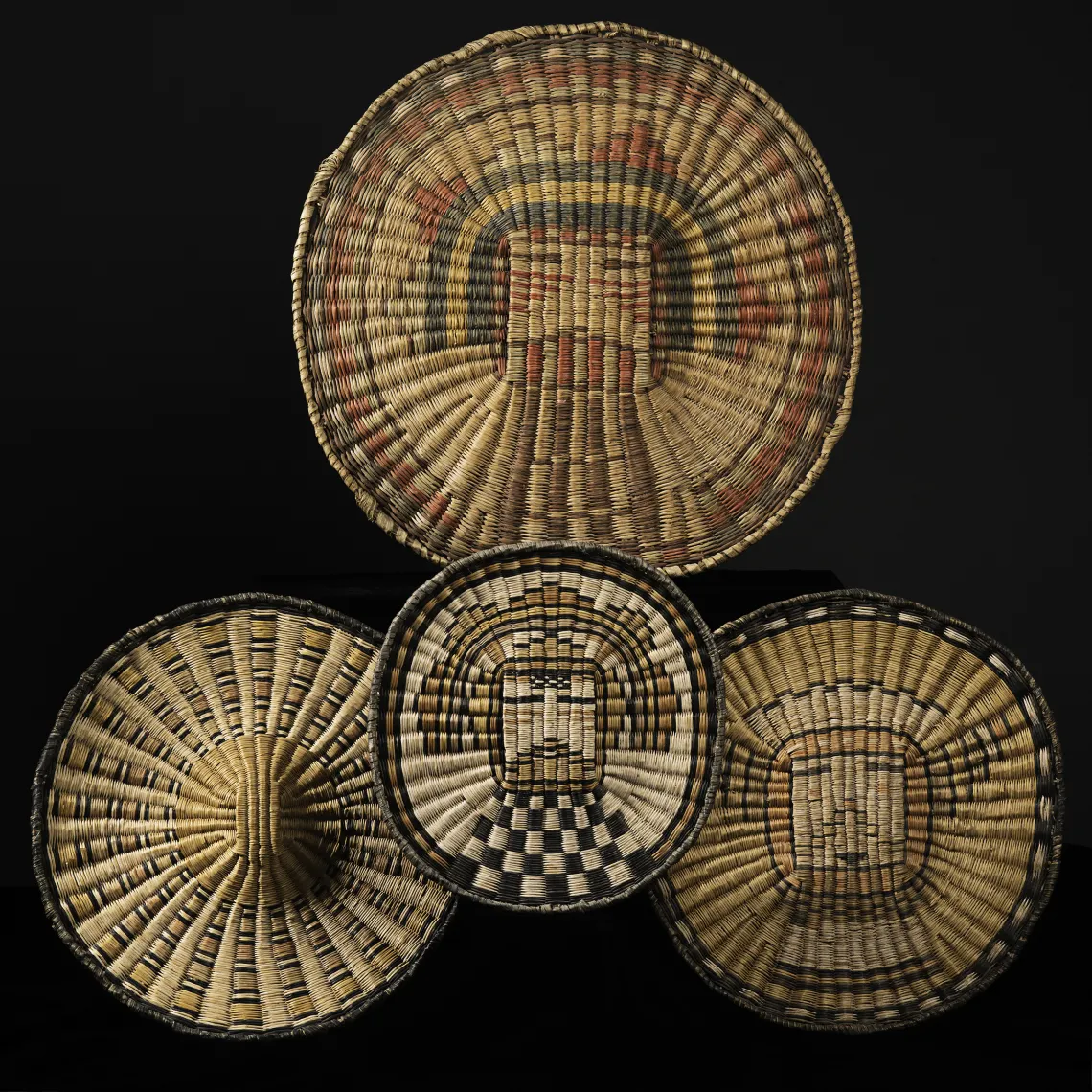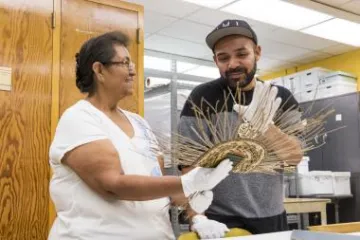Woven Tradition
It’s enlightening for me to see these older pieces,” Jessica Lomatewama said.

Wicker plaques; rabbitbrush, dune broom, yucca. Top to bottom, Left to right: Sa’lakwtaqa (Shalako man katsina), ca. 1910; Corn cob design, ca. 1935; Sa’lakwtaqa (Shalako man katsina), ca. 1945; Kòoninkatsina (Havasupai katsina), ca. 1930.
Arizona State Museum
The Hopi master basket weaver held a large woven basket in her gloved hands. “There are no words to describe seeing these baskets, especially these huge ones. I wonder who the person was that made it. I’d like to meet her.”

Jessica Lomatewama and Jeremy Johns
Lomatewama was examining one of 208 Hopi baskets donated to the Arizona State Museum by Judith W. and Andrew D. Finger. As a master artist in the museum’s Honoring Traditions/Bridging Generations program, Lomatewama got an intimate look at these new additions.
Jeremy Johns, a Tohono O’odham and Akimel O’odham basketweaver, was paired with Lomatewama as an emerging artist intern in the program. Together, they pored over each basket, discussing everything from how materials like rabbitbrush are gathered to weaving techniques.
“It’s not just learning from an individual person — you’re learning from that person’s family, from their parents and their friends. It’s knowledge that goes back literally hundreds of years,” Johns said.
The majority of baskets in the Finger collection depict “katsinam,” spirit messengers integral to the culture of Hopi people. Lomatewama explained how certain baskets are incorporated in young women’s initiation ceremonies or traditional weddings. Other baskets are used for serving “piiki,” a thin, rolled, traditional Hopi flatbread.
“My number-one goal is to share where I come from and what these baskets are used for,” Lomatewama said.
Diane Dittemore, the museum’s curator of ethnological collections, hopes Lomatewama is the first of many Hopi artists to interact with the Finger collection and connect to their deep history. She would like to take the baskets on the road and develop outreach programs in Hopi communities.
“I look forward to working with the Hopi tribe and facilitating more conversations like the one we heard with Jessica,” said Dittemore. “These are really profound ways that we can share a much more in-depth, culturally enriched story.”
ASM’s collection of American Indian basketry is known as the world’s largest, most comprehensive collection of its kind, with more than 4,000 historic and contemporary baskets. The museum’s mission is to preserve and steward the baskets in perpetuity so they are available for research, education and outreach far into the future.
“By just touching this basket, I’m making a connection,” Lomatewama said. “I wonder what was going through the weaver’s mind the day she made this. I wonder if she was a relative of mine.”
Preserving History
Their research and love for the art form inspired the Fingers to meticulously assemble and thoroughly document their collection of Hopi baskets. “Through this donation we hope that future generations will always have a window into the Hopi people’s rich culture and history,” said Andrew Finger.
Support Arizona State Museum’s mission to preserve, create and share knowledge about the peoples and cultures of Arizona and surrounding regions

